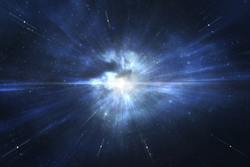Modelling suite to probe stellar explosions
Scientists working on the EU-funded project STELLAR EXPLOSIONS developed improved models of explosion mechanisms and radiation dynamics. They applied them to probe the spectra, light curves and polarisation signatures of all types of supernovas (SNes), the largest explosions occurring in space, as well as to other explosive stellar events for exciting new descriptions of dynamics. The key to success in modelling the mechanisms of explosions was in starting with physically consistent models of the progenitor star produced from the public stellar evolution code MESA-Star. Scientists then developed radiation hydrodynamics code, called V1D, to treat core collapse and stellar eruptions. The pinnacle of project modelling was the development of CMFGEN, including all relevant processes for non-local thermodynamic equilibrium (non-LTE) and the time-dependence of radiative transfer in homologously expanding SNe ejecta. Ejecta are the remnants of the stars ejected when they explode. After billions of years of explosions, they provide important information about how the Universe came to be the way it is. CMFGEN was expanded to include treatment of non-thermal processes as well, and has been tested against a variety of data. STELLAR EXPLOSIONS uniquely combines three modelling codes (MESA, V1D and CMFGEN) for comprehensive dynamic descriptions of massive star explosions with unprecedented detail and interrelationships. In addition, CMFGEN enables detailed study of the non-LTE aspect of radiative transfer not possible with other available codes.Applications of the algorithms have provided groundbreaking information about all types of SNe explosions. Models of the ejecta have generated light curves and full polarised spectra for any SN type. Code development and application to observations have far exceeded original expectations, resulting in many publications in peer-reviewed scientific journals. Overall, STELLAR EXPLOSIONS has delivered a suite of software tools for modelling the causes, mechanisms and effects of SNe explosions that will foster a powerful burst of experimental and theoretical investigations into some of the most important questions about our Universe.



